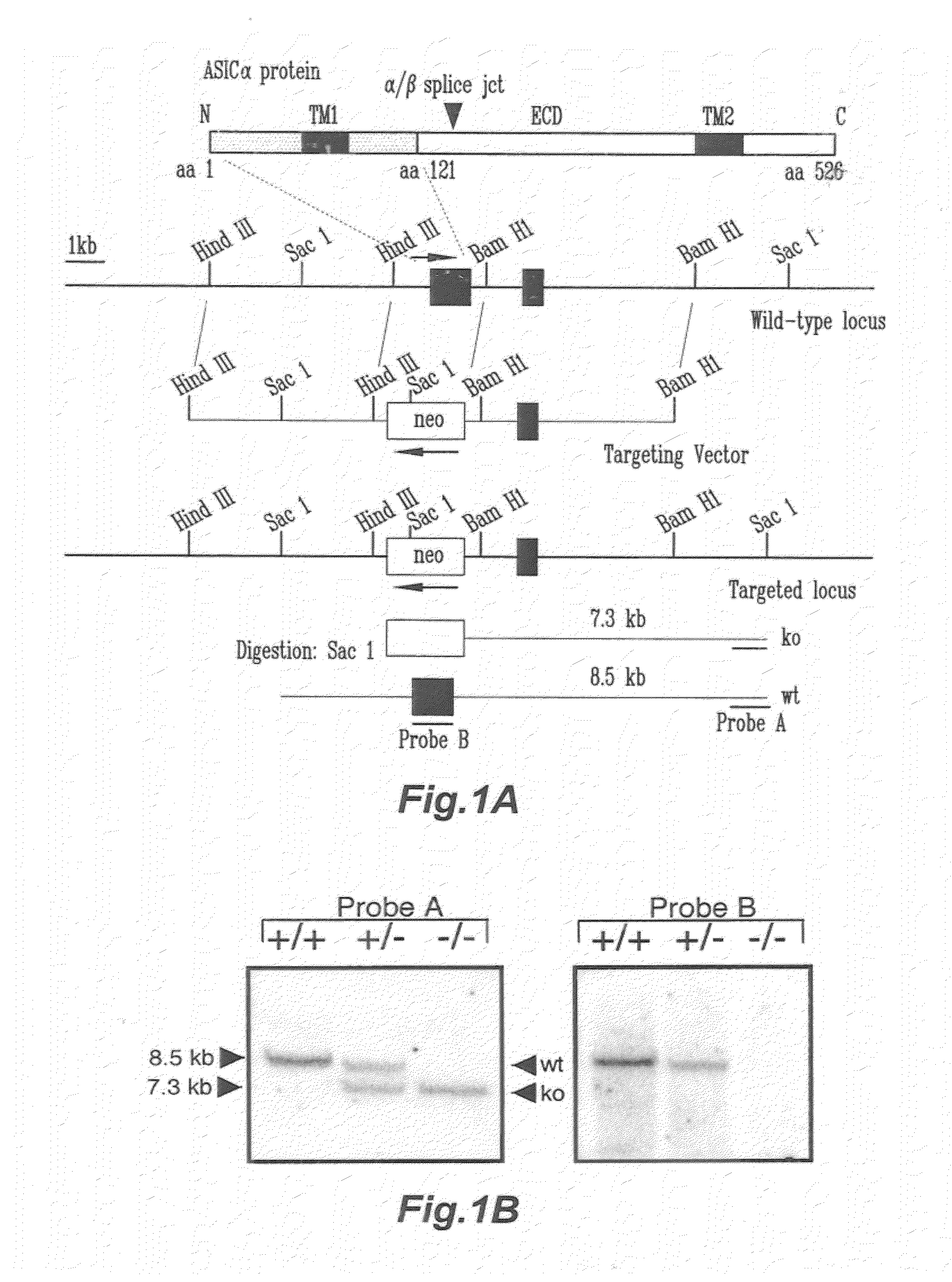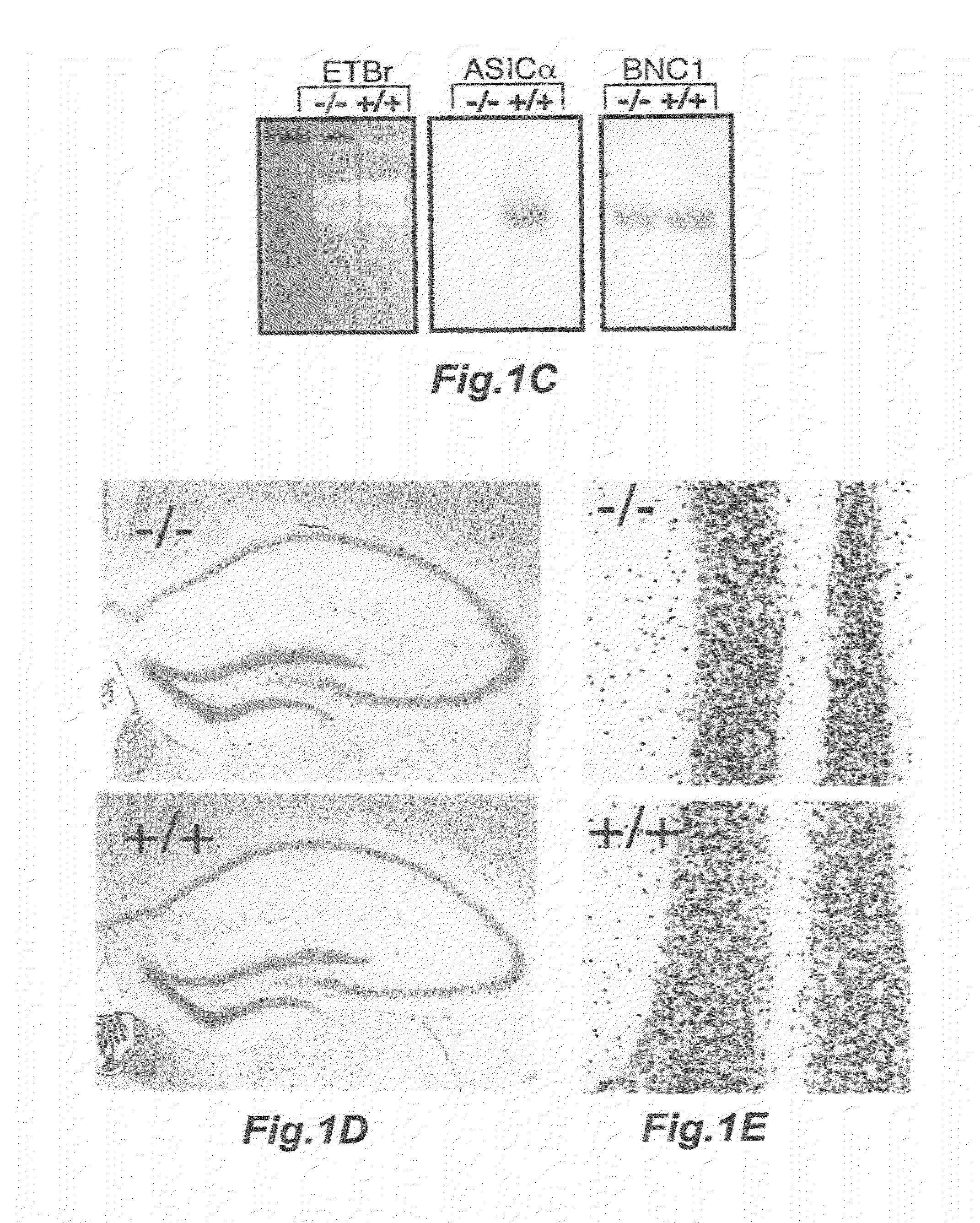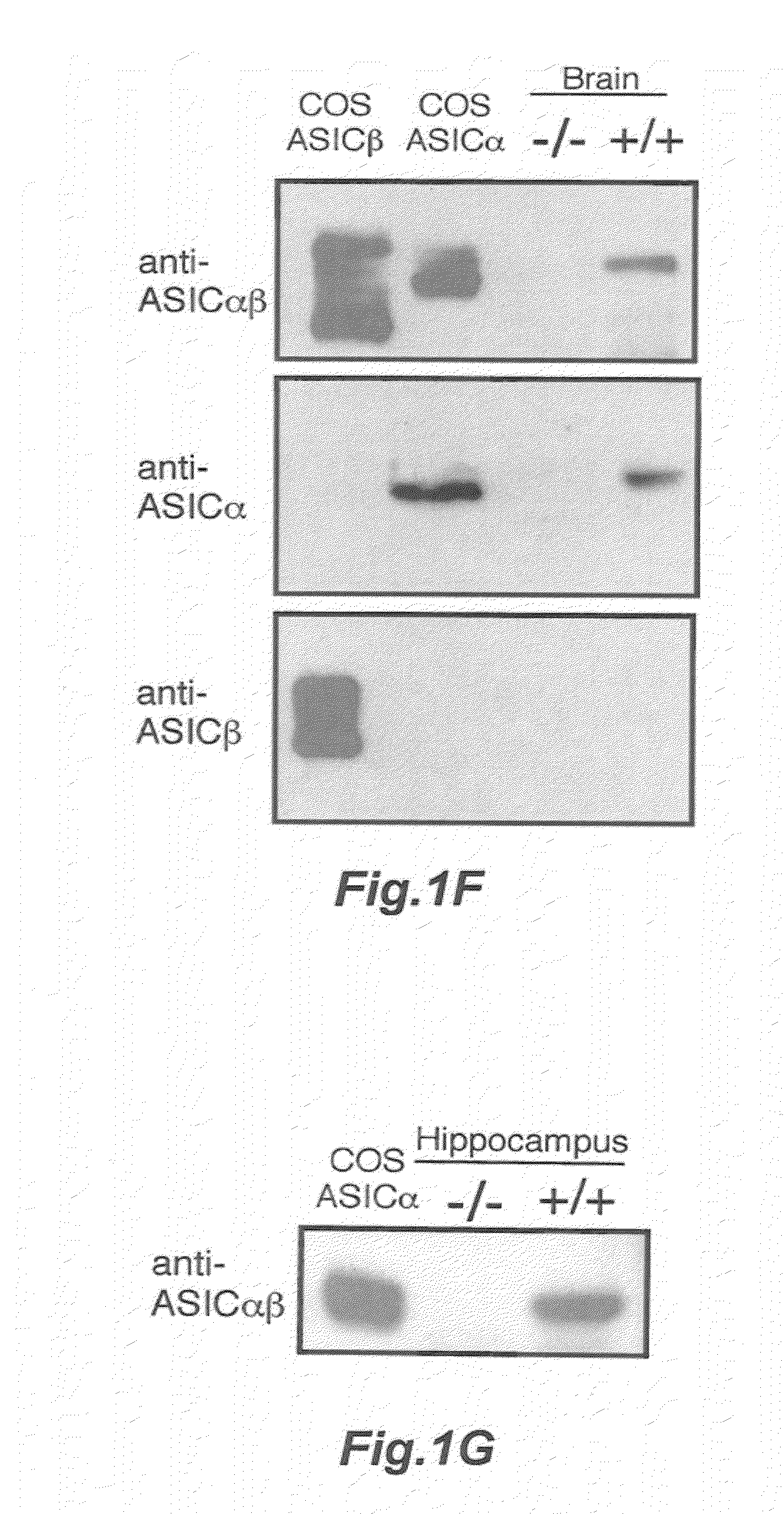Compositions and methods for modulating the acid-sensing ion channel (ASIC)
a technology which is applied in the field of acidosis sensing ion channel (asic) agonists, antagonists and modulators, can solve the problems of not finding a satisfactory mechanism for modulating the function of the nmda receptor, limiting the therapeutic application of many known nmda antagonists, and unable to overcome the damage of acidosis and high extracellular glutamate, and enhancing memory and learning
- Summary
- Abstract
- Description
- Claims
- Application Information
AI Technical Summary
Benefits of technology
Problems solved by technology
Method used
Image
Examples
example 1
Targeted Disruption of the Mouse ASIC Gene
[0085]ASIC knockout mice were generated by deleting a region of genomic DNA encoding the first 121 amino acids of ASICα. This region includes the intracellular N-terminus, the first transmembrane domain, and a portion of the extracellular domain of the ASICα protein. The wild-type locus, targeting vector and targeted locus are shown schematically in FIG. 1A. Southern hybridization of Sac 1 digested genomic DNA with the flanking probe demonstrated targeted integration (FIG. 1B, probe A). Southern hybridization using the targeted exon as a probe confirmed the elimination of this sequence in the knockout mice (FIG. 1B, probe B). Consistent with the absence of a critical portion of the ASIC gene, there was a disruption of the corresponding message in total brain RNA by northern blotting (FIG. 1C). In contrast, the level of BNC1 transcripts was unchanged in ASIC − / − brain relative to + / +littermates (FIG. 1C).
[0086]ASIC knockout mice were viable a...
example 2
ASIC Colocalizes with PSD-95 in Hippocampal Neurons and Synaptosome-Enriched Subcellular Fractions
[0088]To investigate the location of ASIC within neurons, cultured hippocampal neurons were transfected with an epitope-tagged ASICα and studied its distribution by immunocytochemistry. ASIC specific immunostaining was detected in the cell body and in a punctate pattern in dendritic processes both proximally and distally (FIG. 2A). The distribution of ASIC in axons (FIG. 2A, arrow) was less pronounced and more diffuse. The localization of ASIC coincided in large part with that of co-transfected PSD95 linked to GFP (FIG. 2B); this fusion protein exhibits a synaptic pattern of distribution (Craven et al., 1999). GFP alone distributed diffusely throughout the neuron and the pattern of ASIC distribution was not dependent upon exogenous PSD-95 expression (not shown). These results suggest that ASIC is located at hippocampal synapses, particularly in the postsynaptic membrane.
[0089]To explore...
example 3
ASIC Contributes to Acid-Evoked Currents in Hippocampal Neurons
[0090]Previous studies have identified acid-evoked Na+ currents in hippocampal neurons (Vyklicky et al., 1990). The presence of ASIC in these neurons suggested that this channel subunit contributes to the H+-gated currents. To test this hypothesis, the currents in cultured hippocampal neurons by whole-cell patch-clamp were measured.
[0091]Whole-cell patch-clamp was performed on large hippocampal pyramidal neurons cultured for 1 to 2 weeks. Electrodes had a resistance of 4-7 MΩ when filled with the intracellular solution containing (in mM): 120 KCl, 10 NaCl, 2 MgCl2, 5 EGTA, 10 4-(2-hydroxyethyl)-1-piperazineethanesulfonic acid (HEPES) and 2 ATP. The pH was adjusted to 7.2 with tetramethylammonium hydroxide (TMA-OH) and osmolarity with tetramethylammonium chloride (TMA-Cl). Extracellular solutions contained (in mM): 128 NaCl, 1.8 CaCl2, 5.4 KCl, 5.55 glucose, 10 HEPES and 10 2-(4-morpholino)-ethanesulfonic acid (MES), and ...
PUM
| Property | Measurement | Unit |
|---|---|---|
| pH | aaaaa | aaaaa |
| pH | aaaaa | aaaaa |
| pH | aaaaa | aaaaa |
Abstract
Description
Claims
Application Information
 Login to View More
Login to View More - R&D
- Intellectual Property
- Life Sciences
- Materials
- Tech Scout
- Unparalleled Data Quality
- Higher Quality Content
- 60% Fewer Hallucinations
Browse by: Latest US Patents, China's latest patents, Technical Efficacy Thesaurus, Application Domain, Technology Topic, Popular Technical Reports.
© 2025 PatSnap. All rights reserved.Legal|Privacy policy|Modern Slavery Act Transparency Statement|Sitemap|About US| Contact US: help@patsnap.com



